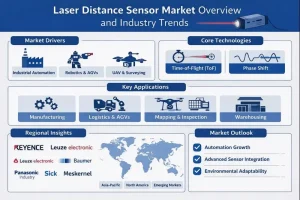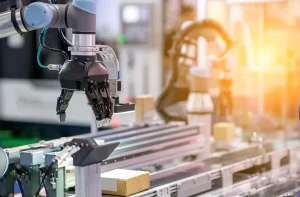Industrial Wireless Communication Enhancements: Revolutionizing Connectivity in Manufacturing
Wireless communication has become a cornerstone of modern industrial operations, driving efficiency, flexibility, and innovation in manufacturing environments. The ongoing enhancements in industrial wireless communication technologies are transforming how factories, plants, and other industrial facilities manage their operations, enabling seamless data exchange, real-time monitoring, and automation at unprecedented levels.
Understanding Industrial Wireless Communication
At its core, industrial wireless communication involves the transmission of data and control signals without physical wiring within industrial settings. Unlike traditional wired systems, wireless setups reduce infrastructure costs, simplify installation, and offer greater flexibility for expanding or reconfiguring operations. Given the challenging environments where industrial communications often occur—characterized by metal structures, electromagnetic interference, and harsh conditions—advancements have focused on robustness, reliability, and security.
Key Enhancements Driving Industrial Wireless Communication Forward
1. Advanced Wireless Protocols for Industrial Use
One of the most significant strides in industrial wireless communication is the development and adoption of specialized wireless protocols designed for their reliability and low latency. Protocols such as WirelessHART, ISA100.11a, and OPC UA are tailored to meet the rigorous demands of industrial environments. These protocols ensure secure and timely data delivery essential for process automation, safety monitoring, and predictive maintenance.
2. Integration of 5G Technology
The introduction of 5G networks is a game-changer for wireless communication in industrial contexts. 5G offers high bandwidth, ultra-low latency, and the capacity to connect thousands of devices simultaneously. For industries, this means enhanced machine-to-machine communication, improved real-time data analytics, and support for emerging technologies like augmented reality (AR) and edge computing. 5G also facilitates the deployment of autonomous robots and vehicles that rely on uninterrupted, high-speed connectivity.
3. Edge Computing and Wireless Communication Synergy
As industrial wireless communication evolves, the integration of edge computing has become a powerful enhancement. By processing data closer to the source rather than sending everything to the cloud, edge devices reduce latency and improve response times. This synergy allows for faster decision-making on the factory floor and reduces the bandwidth burden on wireless networks, making the system more efficient and resilient.
Benefits of Enhancements in Industrial Wireless Communication
Enhanced Flexibility and Scalability
Modern wireless solutions free industrial facilities from the constraints of fixed wiring, making it easier to reorganize layouts or scale operations without costly rewiring. This flexibility supports the dynamic nature of contemporary manufacturing, enabling quick adaptation to changing production needs.
Improved Safety and Maintenance
Wireless sensors connected via enhanced communication networks enable continuous monitoring of equipment health and environmental conditions. Real-time alerts allow operators to respond swiftly to potential issues, reducing downtime and preventing accidents. Moreover, wireless communication facilitates the deployment of remote inspections using drones or mobile robots, further boosting workplace safety.
Cost Efficiency and Reduced Downtime
By minimizing the need for extensive cabling and physical infrastructure, industrial wireless communication cuts down on installation and maintenance expenses. Additionally, better communication leads to smoother operations, predictive maintenance schedules, and quicker troubleshooting, all of which contribute to less downtime and higher productivity.
Challenges and Solutions in Industrial Wireless Communication
Despite the notable enhancements, several challenges persist in deploying wireless communication in industrial settings:
-
Interference and Signal Obstruction: Industrial environments often present obstacles such as metal machinery and electromagnetic interference. The latest wireless technologies address this through mesh networking, signal repeaters, and adaptive frequency hopping.
-
Security Concerns: Given the critical nature of industrial control systems, cybersecurity is paramount. Advanced encryption methods and network segmentation help protect wireless communications from unauthorized access and tampering.
-
Reliability Requirements: Industrial processes demand near-real-time responsiveness. Solutions involving redundant communication paths and failover mechanisms ensure communications remain uninterrupted even in case of device failures.
The Future of Industrial Wireless Communication
The trajectory of industrial wireless communication enhancements points towards increasingly intelligent, autonomous, and interconnected manufacturing ecosystems. Emerging trends include the integration of artificial intelligence (AI) algorithms for predictive analytics over wireless networks, expanded use of private LTE/5G networks for ultra-secure environments, and greater adoption of Internet of Things (IoT) devices to create smarter factories.
As industries continue to embrace these advancements, wireless communication will remain a pivotal enabler of innovation, helping industries achieve higher operational efficiency, sustainability, and competitiveness in the global market.
Conclusion
Enhancements in industrial wireless communication are enabling a new era of connectivity within manufacturing and other industrial sectors. By leveraging advanced protocols, 5G technology, and edge computing, these improvements offer robust, flexible, and secure communication networks essential for modern industrial operations. As the technology progresses, industries will experience unprecedented gains in efficiency, safety, and innovation, solidifying wireless communication as a fundamental component of the industrial digital transformation.




